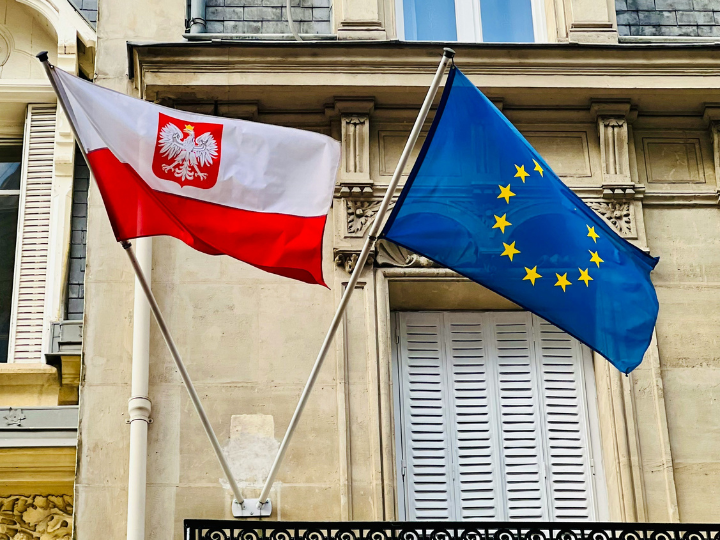Europe's digital economy is growing in strength, spreading throughout all sectors of the economy and reaching into all areas of our lives, according to the European Commission's Digital Competitiveness report published today. Information and Communications Technologies (ICTs) have driven half of the productivity growth in Europe over the past 15 years. Six out of ten Europeans regularly use the internet. However, if Europe wants to fully exploit the potential benefits of the digital economy, it must step up a gear and provide faster broadband and an internet people trust, improve citizens' skills, and encourage even more ICT innovation. The European Commission will propose specific measures in these areas with its Digital Agenda for Europe, a flagship of the Europe 2020 strategy, to be launched shortly.
Digital Agenda Commissioner Neelie Kroes said: "Europe's digital economy is crucial to economic growth and prosperity. ICTs and high speed internet are as revolutionary in our lives today as the development of electricity and transport networks were over a century ago. But we need support for further internet development so that all citizens can benefit from the digital economy."
The report analyses recent developments in the ICT field. It provides significant evidence for the design of a Digital Agenda for Europe, the first European Commission flagship initiative to be launched shortly under the Europe 2020 strategy for smart, sustainable and inclusive growth.
Key driver of the economy
The report identifies the ICT sector as one of the key drivers of the European economy. Since 1995, ICTs have driven half of productivity gains in the EU, thanks to technological progress and investments in the sector. Data for 2004-2007 suggests that this investment has more recently started to deliver efficiency gains in the rest of the economy. The value added of the ICT industry on the European economy is around €600 billion (4.8% of GDP). The sector accounts for 25% of the total business investments in R&D in the EU. However, benefits from ICT in the US are greater. Europe needs structural reforms and a consistent digital agenda to unleash similar impacts.
6 out of 10 Europeans online
Across Europe, about 60% of the population use internet regularly and 48% on a daily basis. These levels compare well to the US where 56% use internet daily and 65% used it in the last three months. Nevertheless, in both the EU (30%) and the US (32%) about one third of the population has never been online.
Important socio-economic and geographical divides exist. In particular, the elderly, less educated and those on low incomes use the internet less and have lower skills levels. Increasing digital skills is crucial for building a European digital society. Again, the EU compares well to the US, although web-use is higher in older Americans (46% of people over 55 in the US have never used the internet compared to 59% in the EU) By contrast, in Korea and Japan differences between socio-economic groups are less marked.
EU is world's largest broadband market
In 2009 the EU broadband market was, once again, the largest in the world. Almost a quarter of EU citizens (24.8%) have a fixed broadband subscription. Although connection speeds are increasing, with 80% of fixed broadband lines in the EU now offering speeds above 2 Mbps, only 18% of them are above 10 Mbps. While these speeds are sufficient for basic web applications, they are not sufficient for more advanced applications like TV on demand. Europe 2020 set ambitious targets for all Europeans to have access to broadband of 30 Mbps or above. Higher speeds will require a move to next generation access networks (NGA). The EU lags significantly behind countries like Korea and Japan in the deployment of such networks. Migration to higher broadband capacity is an important structural challenge for the whole telecoms sector.
Online single market
Apart from playing a significant role in the growth of the European economy, the internet has a huge potential to strengthen the single market. However, the level of eCommerce and eBusiness varies across Member States and cross-border transactions are limited. Although 54% of internet users buy or sell goods via the internet, only 22% of them do so from other EU countries. By contrast, in the US eCommerce is more common place with 75% of internet users buying or selling online. This shows that Europe lacks a genuine digital single market, which is essential to stimulate the growth of European small and medium sized enterprises and to provide consumers with more choice at competitive prices.
Investment in Digital Economy holds key to Europe′s future prosperity
Six out of ten Europeans regularly use the internet. However, if Europe wants to fully exploit the potential benefits of the digital economy, it must step up a gear and provide faster broadband and an internet people trust, improve citizens' skills, and encourage even more ICT innovation.


Across Europe, about 60% of the population use internet regularly and 48% on a daily basis. These levels compare well to the US where 56% use internet daily and 65% used it in the last three months. Nevertheless, in both the EU (30%) and the US (32%) about one third of the population has never been online.



 By: N. Peter Kramer
By: N. Peter Kramer

